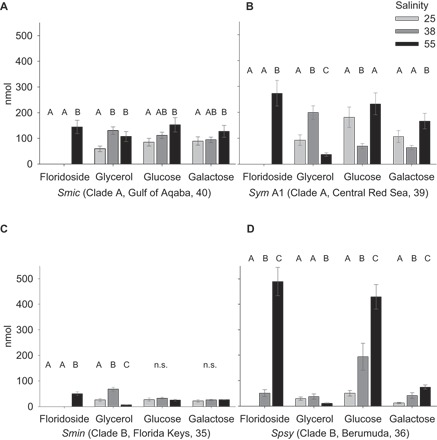Fig. 3. Osmolyte levels of floridoside and intermediates (glycerol, glucose, and galactose) at three salinities across four Symbiodinium strains.

Glucose and galactose can be metabolized to glycerol (via the Calvin cycle) and cover UDP-galactose and glycerol 3-phosphate demands for floridoside synthesis. Bar graphs show floridoside, glycerol, glucose, and galactose levels for S. microadriaticum (type A1) (A), Symbiodinium sp. type A1 (B), S. minutum (type B1) (C), and S. psygmophilum (type B2) (D) cultures at low salinity (25; light gray), ambient salinity (38; gray), and high salinity (55; black) after 4 hours at 108 μmol photons m−a s−1. Clade designation, origin of strain, and respective average salinity are provided following strain abbreviations. Error bars denote SE. Letters indicate Tukey’s HSD post hoc differences based on pairwise comparisons of ANOVA results (groups with different letters are significantly different at P < 0.05). Tukey’s post hoc tests were not performed if ANOVAs yielded a nonsignificant F ratio, designated as n.s. (not significant). Osmolyte levels represent measured amounts (in nanomoles) per 105 cells ml−1.
